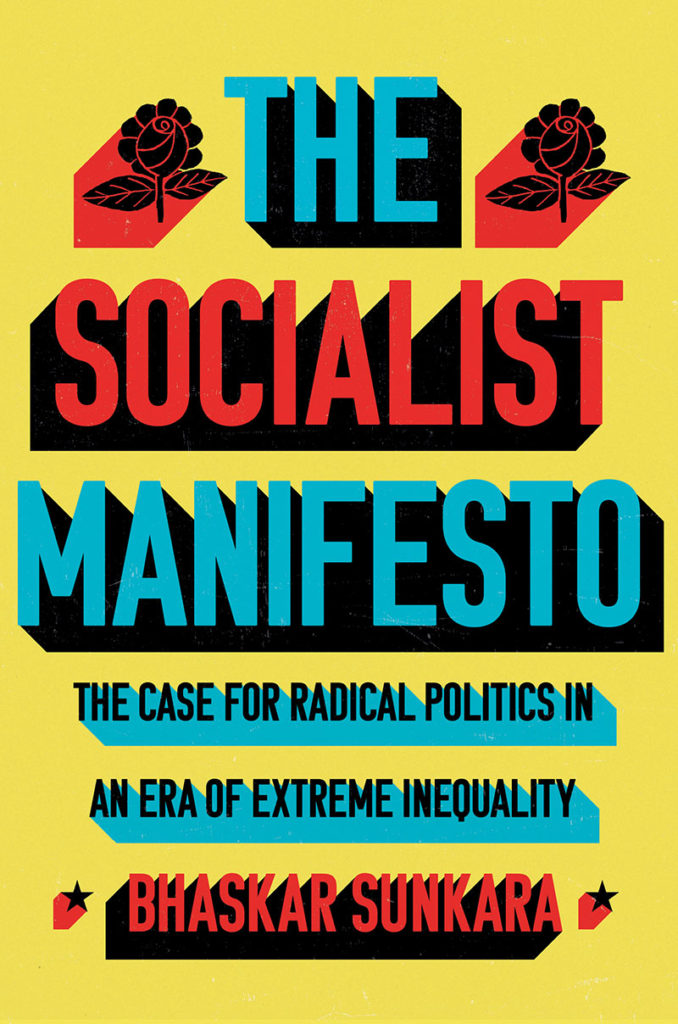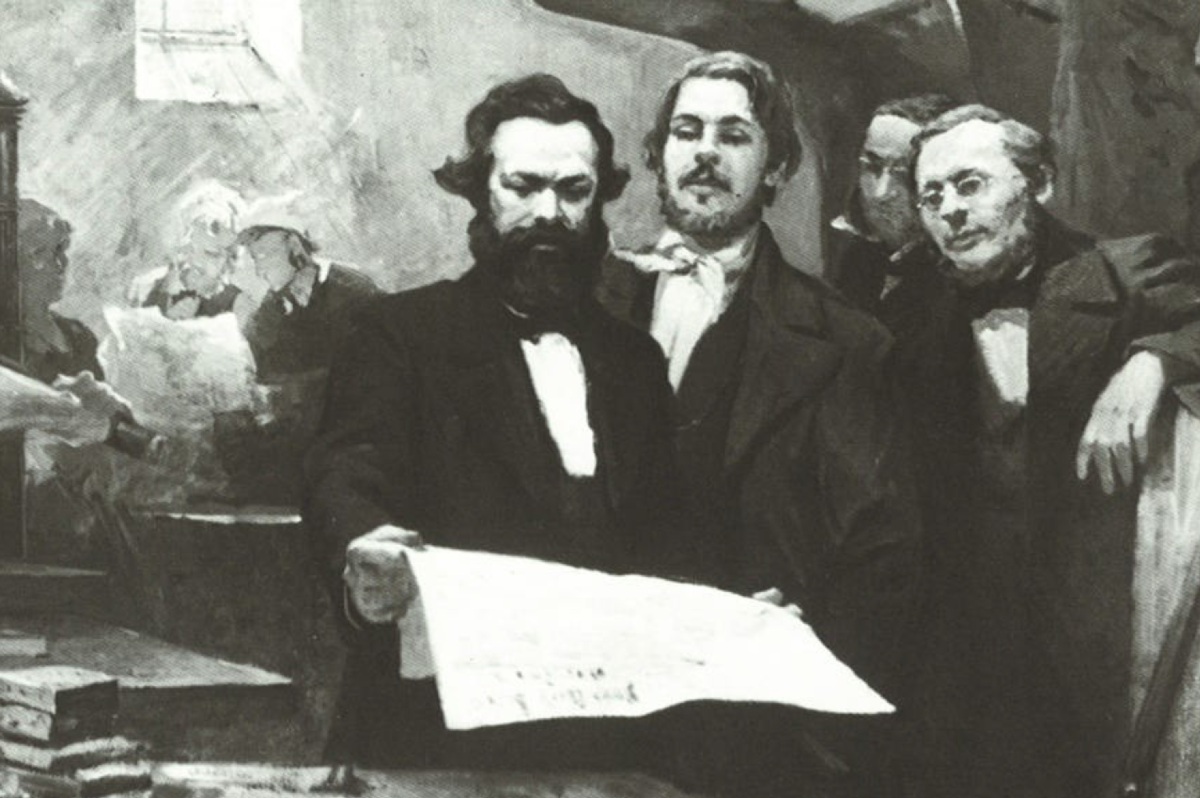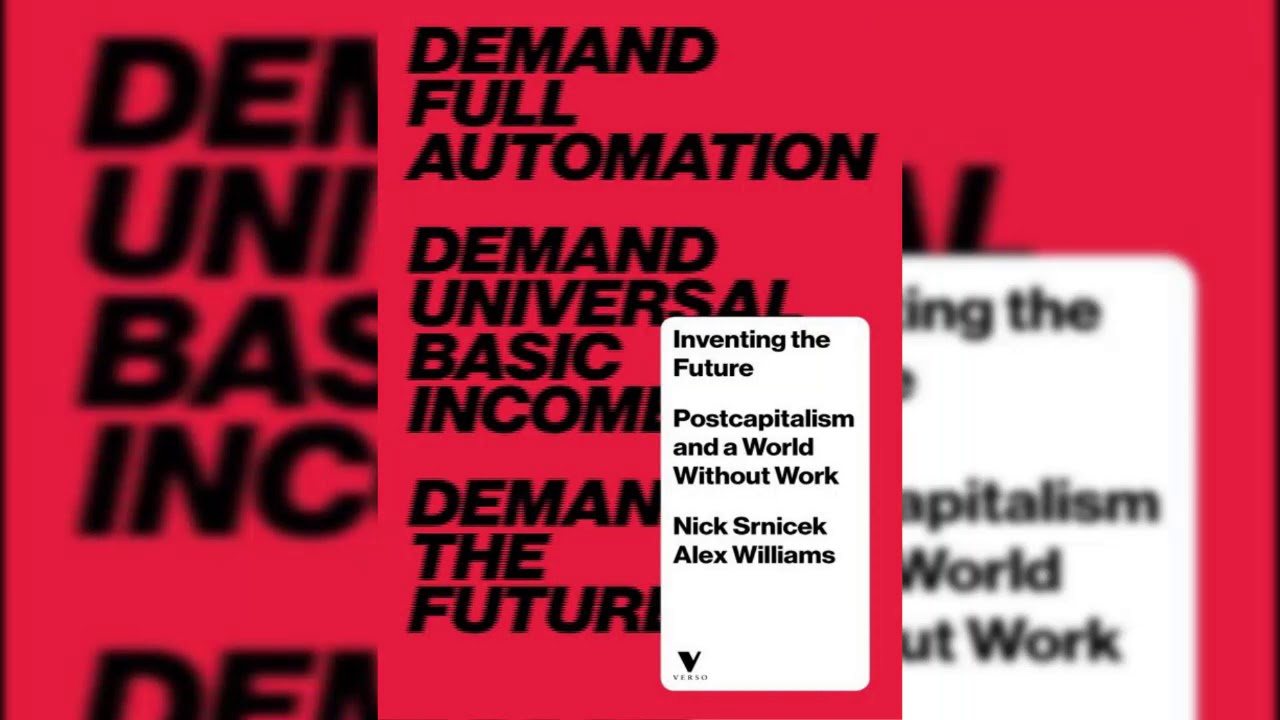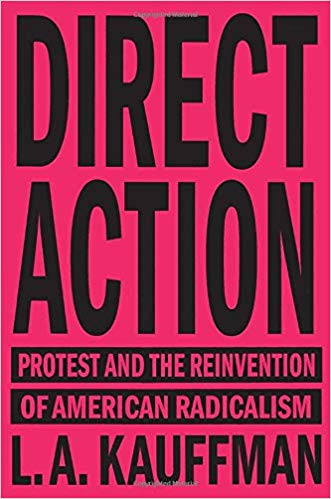Doug Enaa Greene reviews The Socialist Manifesto by Bhaskar Sunkara (New York: Basic Books, 2019). Rather than an innovative take on socialist politics for the 21st century, The Socialist Manifesto is just the same old reformism that has been a dead-end for the left.

Writing in the preface to the 1888 English edition of the Communist Manifesto, Frederick Engels explained why he and Marx did not call their pamphlet the “Socialist Manifesto.” According to Engels, socialism was identified with utopian dreamers and reformers “who wanted to eliminate social abuses through their various universal panaceas and all kinds of patch-work, without hurting capital and profit in the least.” In contrast to socialists, communists were considered dangerous to the ruling class since they stood for working-class revolution and the “radical reconstruction of society” that would end all exploitation and oppression. In other words, Marx and Engels were completely justified in shying away from this “socialism.” Perhaps not realizing this, Bhaskar Sunkara, founder and editor of Jacobin Magazine and a prominent member of the Democratic Socialists of America (DSA), has written The Socialist Manifesto as a primer on the history of socialism and how we can achieve it today.
Sunkara’s proposed socialist strategy is a democratic one conducted primarily through elections. A great deal of the book is spent discussing historical examples of socialists who have undertaken this road, such as the social democratic parties that made up the Second International. In discussing the early socialist parties, such as the German Social Democratic Party, Sunkara locates the key tension between their vision, which hoped for a radical transformation of society and winning immediate reforms. Sunkara says that social democracy’s strategy of incremental reform appeared sound since winning these increased party membership and led to greater votes on election day. Furthermore, social democratic party officials and bureaucrats had a vested interest in reforms, because they now possessed vested interests in the existing order that would be jeopardized if there was a revolution. The end result of this strategy was social democracy’s betrayal of internationalist principles and support for the slaughter of the First World War.
Sunkara argues that what happened in 1914 was not the inevitable result of reformism; it could have been avoided with “institutional measures” to make the party bureaucracy more accountable to the rank-and-file (78). However, The Socialist Manifesto avoids any serious discussion of the root causes of the Second International’s degeneration, such as imperialism, the conservative role of the labor aristocracy, and the abandonment of Marxist theory in favor of “practical results.” As a result, Sunkara avoids seriously examining difficult and uncomfortable questions about his strategy.
In looking to positive examples of democratic socialism, Sunkara spends a great deal of time on post-1945 Swedish social democracy, which he claims was “the most humane social system ever constructed” (14). The Socialist Manifesto claims that Sweden went further than any social democracy in directly attacking capitalism when it attempted to implement the Meidner Plan in the mid-1970s. The Meidner Plan proposed the gradual socialization of the Swedish economy through compelling corporations to continually issue new stock that would then be transferred to workers’ funds controlled by Swedish labor unions. Gradually the unions, and by extension their members, would gain control of the nation’s means of production. However, the Plan was watered down when it was eventually introduced, and capital ultimately defeated it altogether. Sunkara says that the failure of the Meidner Plan reveals the main dilemmas of social democracy, which relies upon winning elections and delivering results, economic expansion, and partnership with capitalists willing to compromise on major reforms. All of this means that social democracy’s reforms are precarious and in danger of being rolled back (123-124). Despite this, Sunkara maintains that “the road to a socialism beyond capitalism goes through the struggle for reforms and social democracy, that it is not a different path altogether” (30).
Still, this raises the question of how can democratic socialists can avoid the failures of Sweden and other social democratic endeavors. Sunkara offers a number of remedies. For one, he recognizes that once social democrats are elected, they will face the same challenges and pressures as their predecessors, since passing reforms require maintaining business confidence and profits. As Sunkara notes, social democrats for the most part have been willing to cave into business pressure and abandon their reform programs. His solution is for extra-parliamentary movements to hold reformers’ feet to the fire (a somewhat weary and shopworn mantra of social democrats) in order to force capital to make concessions. Sunkara says that a serious democratic socialist experiment must understand that the capitalist class will “do everything to stop us” through capital strikes and withholding investment.

Even though Sunkara says “history matters” (236), he ignores the history which disproves his democratic socialist strategy, namely the Chilean road to socialism. The election of Salvador Allende in 1970 on the program of a parliamentary road to socialism represented a far more radical endeavor than the Meidner Plan. It included nationalization of copper mines owned by powerful US corporations, land expropriations and redistribution, and nationalization of banks, among other policies. In line with Sunkara’s strategy, Allende’s government won at the ballot box and was supported by popular and radical movements in the streets, and support for Allende’s party even increased in the off-year elections. Ultimately, the Chilean road to socialism failed. It was undermined by capital strikes, sabotage from American imperialism, and, finally, its violent overthrow by the military coup of 1973.
The failure of Salvador Allende proves a simple truth that Sunkara refuses to recognize — the nature of power. In capitalist society, the state, especially the military, remains an instrument of class domination that must be smashed by the organized and armed working class. If the power and privileges of the capitalist class are threatened in a substantial way, as they were in Chile, capital will respond with brutal force no matter how ‘legal’ and ‘peaceful’ socialists are. Ultimately, the peaceful road is not peaceful at all, but results in a bloodbath for the unarmed working class in the face of capitalist resistance. Therefore, it is necessary to smash the bourgeois state along with its police, army, and the whole repressive apparatus, and replace it with instruments of popular power in order to suppress the resistance of the capitalist class and open the way to socialism. Nothing The Socialist Manifesto proposes confronts this reality; rather Sunkara’s program only paves the way to future defeats.
The Socialist Manifesto does not limit its discussion of history to social democracy. It also looks at revolutionary experiments in Russia and the third world. Despite his rejection of the revolutionary road, Sunkara does not condemn the Russian Revolution outright. Rather, he spends many pages challenging the crude anticommunist narrative of 1917 and the notion that Leninism simply led to Stalinist totalitarianism. Sunkara emphasizes that Lenin’s revolutionary strategy did not lead to Stalinism; it was, in fact, based on orthodox social democracy: “But it wasn’t a blueprint for a radically different party; rather, these were tactics needed for a movement barred from the legal organizing and parliamentary work pursued by its counterparts elsewhere. Once tsarism was overthrown, backward Russia and its small working class could develop along Western lines and push the struggle further” (83). The Bolshevik’s social democratic origins meant that they were a lively and democratic party rooted in the working class. This changed with the outbreak of World War One and the revolutions of 1917 when the Bolsheviks broke with social democracy and seized power. Still, Sunkara rejects the simple narrative that the Bolsheviks staged a coup in 1917. Instead, he argues that while it was “certainly not as spontaneous as the February Revolution, October represented a genuine popular revolution led by industrial workers, allied with elements of the peasantry” (93).
After taking power, the Bolsheviks, according to Sunkara, struggled to build a new order while facing economic breakdown, foreign intervention, and civil war. This unprecedented situation led Lenin to centralize power and resort to red terror in a desperate struggle against counterrevolutionaries. While Sunkara does not believe red terror was inherent in Bolshevism, he does fault Lenin for squelching democracy and open debate in Russia (98).
In contrast to other democratic socialists, Sunkara does not casually dismiss the Russian Revolution as totalitarian from the beginning. Rather, he wants to remember the grandeur, power, and heroic vision of 1917. And yet, The Socialist Manifesto sees no other outcome for the Bolsheviks other than Stalinism because “materially, Russia wasn’t ripe for socialism” (88). Sunkara believes that due to the unfavorable objective circumstances and the fact that they had no other model to rely upon, the Bolsheviks had no real options, but he concludes that their model, which was “built from errors and excesses, forged in the worst of conditions, came to be synonymous with the socialist ideal itself” (103-104). He sees no alternative path offered by any of the other Bolsheviks. Trotsky himself is acknowledged as “Stalinism’s greatest critic” but one who “couldn’t admit that any part of the system he so despised had its genesis in the early repression that he himself had helped engineer.” (101). As a result, the emergence of Stalinism as a “horrific totalitarian regime unlike any the world had ever seen” was the inevitable, albeit tragic outcome, of Russian backwardness (102). In the last instance, Sunkara’s remembrance for 1917 is that of tragedy, with the attitude that its revolutionary ideas have no relevance for today.
Revolutions in China, Cuba, and Vietnam fare little better in Sunkara’s estimation. He acknowledges that it was Leninism, not social democracy, that appealed to the third world since it emphasized anti-imperialism and the needs of the peasant majority. Following the argument of DSA founder Michael Harrington, Sunkara argues that because the third world lacked the preconditions of socialism, Marxists were forced to rely upon “substitute proletariats” such as peasants in order to lay the foundation of capitalist modernity. As a result, the Chinese, Cuban, and Vietnamese revolutions came from above and “ruled over and on behalf of the oppressed, not through them” (131). However, Steve Cushion’s A Hidden History of the Cuban Revolution: How the Working Class Shaped the Guerillas’ Victory shows, contrary to Sunkara’s claim, that there was working class involvement throughout the course of the Cuban Revolution and it cannot be reduced to a revolution from above. There is no consideration of the possibility of peasants as revolutionary subjects, which would require a far deeper engagement with the dynamics of the Chinese, Cuban, and Vietnamese Revolutions than Sunkara is prepared to do. Rather, The Socialist Manifesto concludes that third world revolutions vindicate the claim that socialism requires an advanced productive base in order to prevail, otherwise the result is authoritarian collectivism.

This argument is premised on a rigid stagist reading of Marx’s work, not to mention a serious misreading of history. That is something Marx himself rejected in his later writings on the Russian commune. There, Marx was far more open to the possibilities of socialist revolution in underdeveloped countries as opposed to the necessity of all nations following the historical path laid out by Western Europe. And for someone schooled in Trotsky’s writings, Sunkara does not even discuss his theory of permanent revolution, which argued that revolution could occur in the capitalist periphery before the center. Trotsky argued emphatically against a simple stagist path: “To imagine that the dictatorship of the proletariat is in some way automatically dependent on the technical development and resources of a country is a prejudice of ‘economic’ materialism simplified to absurdity. This point of view has nothing in common with Marxism.” The revolutions in the third world confirmed the theory of permanent revolution, since the masses in the third world did not wait idly by with folded arms for the development of capitalism. Rather, they carried out the tasks of the bourgeois revolution and went further by taking the socialist road. And despite the mistakes, limitations, and setbacks of revolutions in China, Cuba, and Vietnam, they did more to advance the cause of socialism than the social democracies of Western Europe, which all made their peace with imperialism.
Based on his understanding of history, what concretely does Sunkara propose for American socialists? He argues that socialists must take account of the particular American conditions, namely the two-party system, that make forming an independent socialist party so difficult. While not rejecting the formation of a socialist party as a distant goal, Sunkara believes it is necessary to operate inside the Democratic Party for the foreseeable future. Unlike Michael Harrington, Sunkara does not consider realigning the Democrats to be a realistic strategy. Rather, he says that due to the loose nature of the Democrats they are vulnerable to “the electoral equivalent of a guerrilla insurgency” (232). He points to the example of Bernie Sanders and his 2016 election campaign that fought against the Democratic Party machine: “Sanders believed that the path to reform was through confrontation with elites….[He] gave American socialism a lifeline by returning it to its roots: class struggle and a class base” (201). For Sunkara, Bernie Sanders represented a real alternative program and his campaign created a new political constituency of “Berniecrats” who are fighting against inequality. The Socialist Manifesto argues that socialists must build upon the Sanders’ campaign by constructing their own alternative narrative in order to win elections and pass sweeping reforms.
Sunkara’s argument downplays the power of the Democratic Party and its ability to co-opt social movements and present itself as a party of the people while serving the interests of liberal capitalism. Furthermore, his argument that Bernie Sanders represented a watershed moment in American politics is based on myth-making and ignoring his actual record. While it may have been the case that Sanders was a “class struggle social democrat” in his youth, that has not been the case for many decades. As Murray Bookchin and Alexander Cockburn have observed, Sanders is very much a career politician and a Democrat in all but name. Sanders consistently supports and funds imperialist wars and apartheid Israel and does not advocate a socialist program, but one of New Deal liberalism, as he himself has recently admitted. In contrast to Sunkara, socialists must recognize the limitations of Sanders and the Democratic Party and clearly demarcate ourselves by creating independent organizations and presenting a revolutionary alternative.
It is to Bhaskar Sunkara’s credit that The Socialist Manifesto is an easy read. No doubt, Sunkara’s work will appeal to a wide audience, especially those who want a primer on the ideas and strategy of democratic socialism. However, a real discussion on socialism begins with the acknowledgement that it has not been democratic socialism, but only revolutionary communism that has breached the walls of capitalism. That means a sober look on the organizations, methods, and means necessary to make that revolution a possibility, not repeating the failed strategies of reformism. This is something The Socialist Manifesto does not do, meaning that it provides little value to understanding what is needed to achieve socialism.



